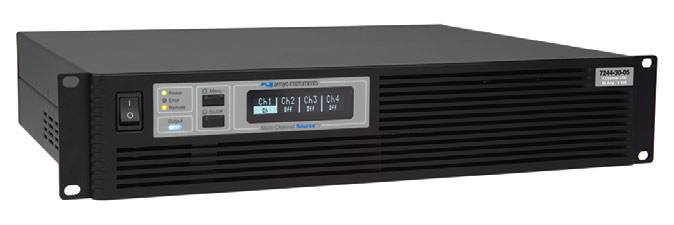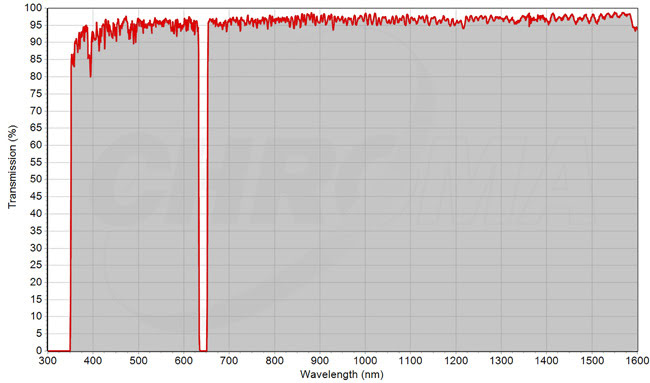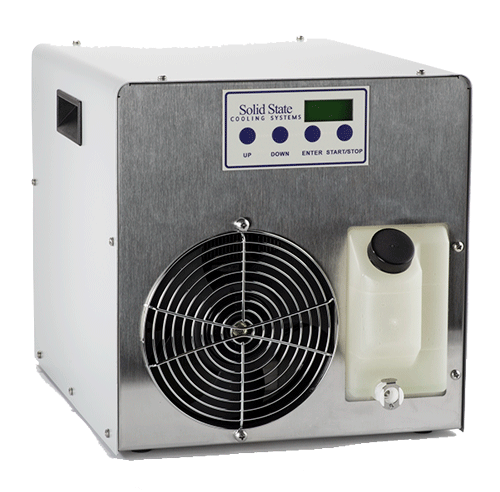|
|
Wednesday, January 8, 2020
|
Monthly newsletter from the editors of Photonics Spectra, with features, popular topics, new products, and what's coming in the next issue. Manage your Photonics Media membership at Photonics.com/subscribe.
|
|
|
| sponsor |

|
|
With Innovations, Lasers Boost Performance
With their performance rising, semiconductor lasers may be able to best their fiber-based counterparts in a wide variety of applications. On the horizon are potential game changers, such as high-power blue laser diodes and organic laser diodes. But innovations are being made in fiber and other types of lasers as well. The overall result for these light source technologies is a drop in the cost per watt delivered, more wavelengths, higher power, and other improvements.
|
|
|
|
|
|
Imaging the Oldest Light in the Universe with the BICEP Array
The field of experimental cosmology is unique among the physical sciences. It uses the entire observable universe as a laboratory, within which examinations of large-scale physical phenomena can help physicists answer some of the most fundamental questions in science. The concept that our universe originated in a hot Big Bang was first developed in the mid-1940s by George Washington University professor George Gamow. Gamow’s theory was borne out by the discovery of the cosmic microwave background by Robert Wilson and Arno Penzias in the early 1960s.
|
|
|
|
|
|
 Advancements in Holography Usher In Sci-Fi-Inspired Devices
Advancements in Holography Usher In Sci-Fi-Inspired Devices
The 1971 Nobel Prize in physics was awarded to the Hungarian-British electrical engineer Dennis Gabor for inventing the field of holography. It wasn’t until six years later, however, that the discipline would gain widespread recognition. In 1977, the movie “Star Wars” arrived in U.S. theaters, and the robot R2-D2 projected Princess Leia Organa saying the memorable words, “Help me, Obi-Wan Kenobi. You’re my only hope.”
While Leia’s projection technically was not a hologram but a volumetric light-field display (a technique used to bring back to the stage deceased entertainers such as Elvis Presley and Tupac Shakur), three-dimensional holograms have been inextricably linked with a vision of the future. Current applications in holography are poised to usher it in.
|
|
|
|
|
|
 EASY HAZ™ Laser Hazard Analysis Tool
EASY HAZ™ Laser Hazard Analysis Tool
Kentek Corp.
EASY HAZ™ LSO Edition is a powerful Laser Hazard Analysis tool for LSOs with an easy-to-use database for laser inventories and audits (included with our LSO Classroom Courses).
FEATURES: • Continuous Wave, Single Pulse, and Repetitive Pulse calculations.
Visit Website
Request Info
|
|
|
 Multi-Channel Laser Driver
Multi-Channel Laser Driver
Arroyo Instruments LLC
The 7244 Series Laser MultiSource driver brings four-channel high-power capability in a compact rack-mountable chassis. Choose 30 A for your high-power diode pumps, or up to 56 V for strings of laser diodes. Ethernet and USB. Modulation input for analog control. Built with the performance you would expect from Arroyo...
Visit Website
Request Info
|
|
|
|
|
|
 Mantis³
Mantis³
Photonis Scientific Inc.
The Mantis³ consists of a Timepix3-based visible light camera coupled to a Cricket containing a high-end image intensifier. The TPX3Cam* is a high-rate, event-driven, timestamping camera.
Visit Website
Request Info
|
|
|
 Highest Performing Notch Filter
Highest Performing Notch Filter
Chroma Technology Corp.
Chroma Technology introduces the TopNotch™ line of narrow band, notch rejection filters. Offering best-in-class performance with transmission from 350-1600 nm and rejection FWHM of 3% of center wavelength.
Visit Website
Request Info
|
|
|
|
|
|
 TCube edge Thermoelectric Chillers
TCube edge Thermoelectric Chillers
Solid State Cooling Systems
TCube edge is our newest family of thermoelectric recirculating chillers for precise (±0.05°C) temperature control of lasers, optics, low light CCD cameras, and many other applications. Seven different models are available...
Visit Website
Request Info
|
|
|
|
|
|
Compact IR Spectrometer Fits on a Chip
In an advance for smartphone spectroscopy, researchers at ETH Zurich have developed a chip about 2 square centimeters in size that can be used with a smartphone to analyze infrared (IR) light in the same way a conventional spectrometer would.
|
|
|
|
|
|
Researchers at Columbia University and the University of California, San Diego, have used a combination of measurement techniques to simultaneously examine the electrical, magnetic, and optical properties of quantum materials. The work was inspired by “multi-messenger” astrophysics, a technique that employs simultaneous measurements from different instruments, including infrared, optical, x-ray, and gravitational-wave telescopes, to deliver a more robust physical picture than would be possible using one form of measurement alone.
|
|
|
|
Researchers at Georgia Institute of Technology have integrated a microheater and a microring resonator onto a silicon carbide (SiC) chip, creating a photonic integrated chip that can be thermally tuned by applying an electric signal. The approach could one day be used to create a range of reconfigurable devices such as phase-shifters and tunable optical couplers.
|
|
|
|
Advancements in Precision Motion Control for Electro-Optical Manufacturing and Laser Materials Processing
Wed, Jan 22, 2020 1:00 PM - 2:00 PM EST
With a focus on high-throughput/high-yield positioning and microrobotic solutions for leading-edge manufacturing, this webinar from Physik Instrumente (PI) will present the latest advancements in software, control algorithms, and motion systems hardware available to design engineers and scientists in the laser processing, optics, and photonics industries. Examples will include laser processing of substrates with nonuniform topologies and autonomous microrobotic and precision-positioning solutions for fast optimization in the manufacture of silicon photonic, laser electro-optic, lidar, and imaging-optic assembly and test.
|
|
|
|
Features
Laser Cleaning Techniques, Infrared Sensors, Plasmonics, and more.
Photonics Media is currently seeking technical feature articles on a variety of topics for publication in our magazine Photonics Spectra. Please submit an informal 100-word abstract to Susan Petrie, Senior Editor, at Susan.Petrie@Photonics.com, or use our online submission form www.photonics.com/submitfeature.aspx.
|
|
|
 Since 1967, Photonics Spectra magazine has defined the science and industry of photonics, providing both technical and practical information for every aspect of the global industry and promoting an international dialogue among the engineers, scientists and end users who develop, commercialize and buy photonics products.
Since 1967, Photonics Spectra magazine has defined the science and industry of photonics, providing both technical and practical information for every aspect of the global industry and promoting an international dialogue among the engineers, scientists and end users who develop, commercialize and buy photonics products.
Visit Photonics.com/subscribe to manage your Photonics Media membership.
View Digital Edition
Manage Membership
|
|
|
|
|
|